|
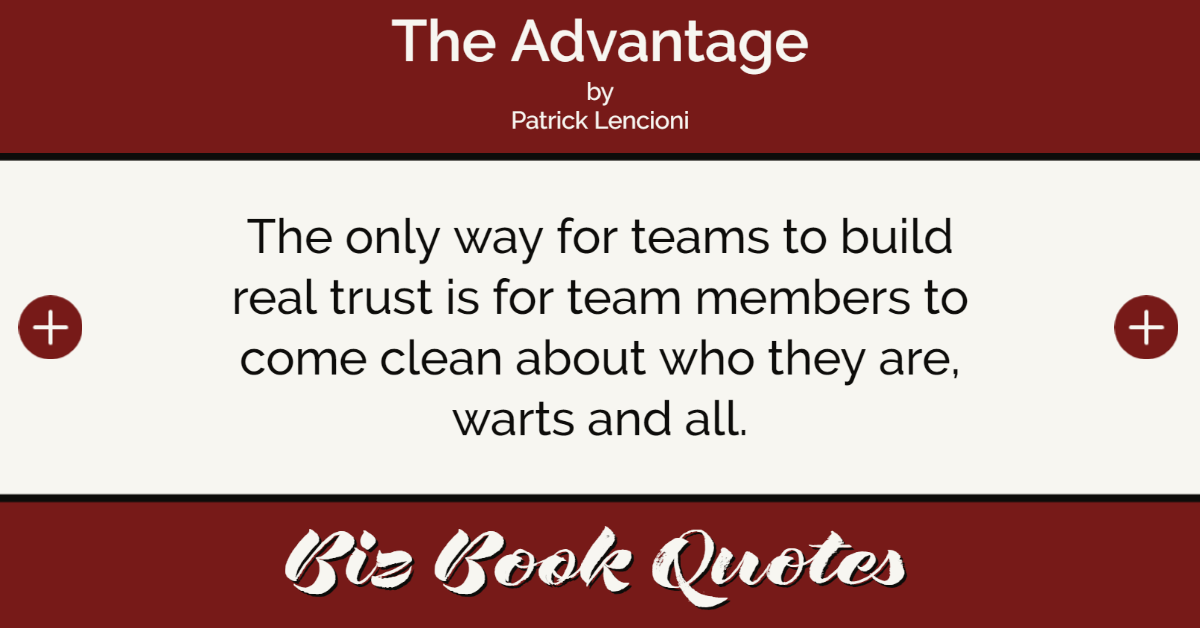
|
The Advantage:
The only way for teams to build real trust is for team members to come clean about who they are, warts and all.
|
35 |
|

|
The Advantage:
The only way for the leader of a team to create a safe environment for his team members to be vulnerable is by stepping up… first.
|
37 |
|
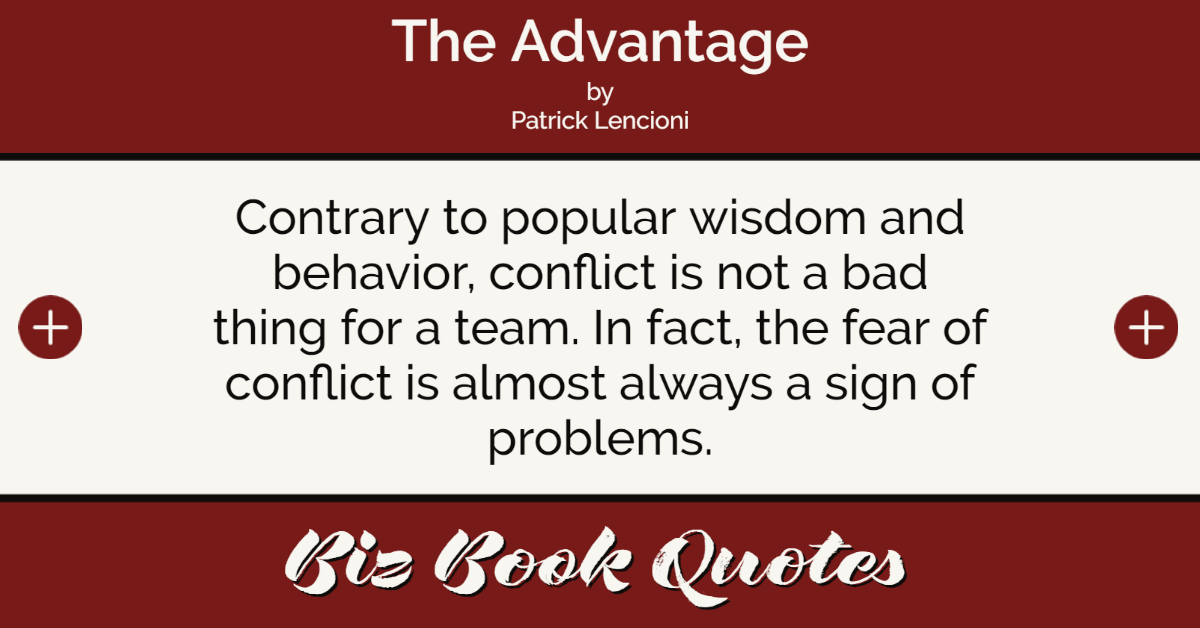
|
The Advantage:
Contrary to popular wisdom and behavior, conflict is not a bad thing for a team. In fact, the fear of conflict is almost always a sign of problems.
|
38 |
|
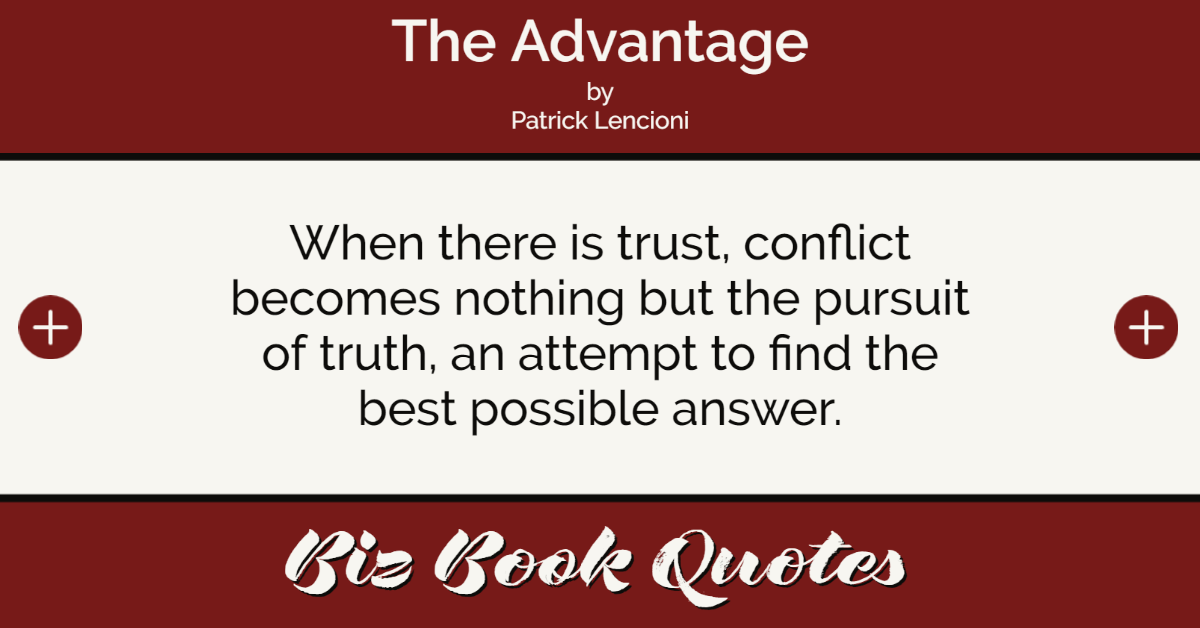
|
The Advantage:
When there is trust, conflict becomes nothing but the pursuit of truth, an attempt to find the best possible answer.
|
38 |
|
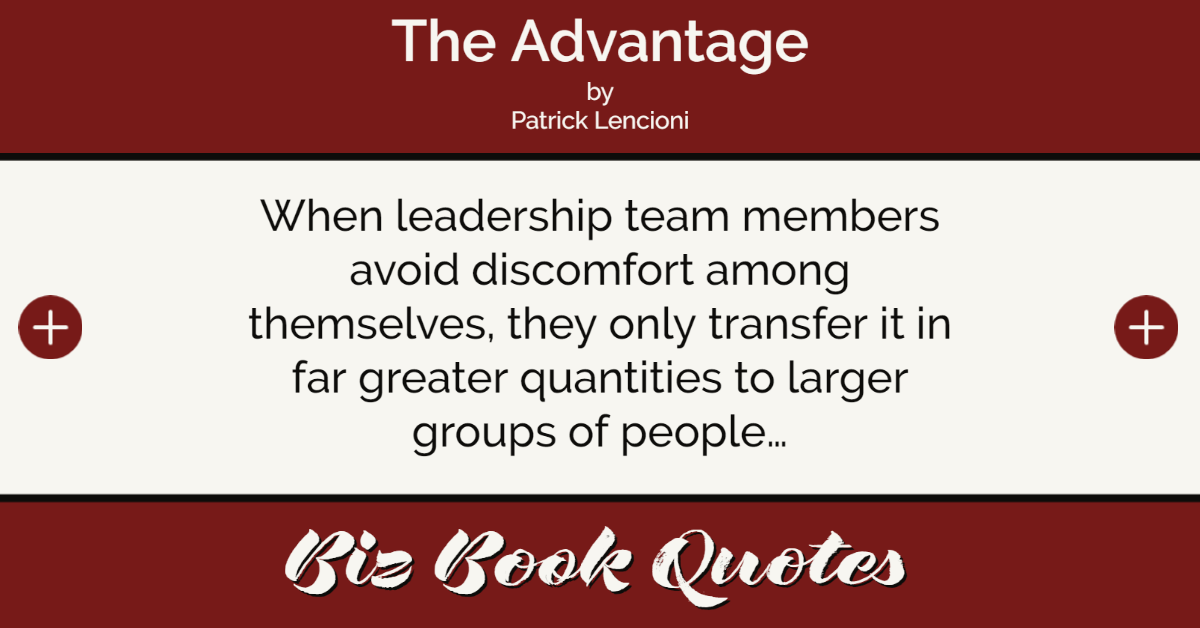
|
The Advantage:
When leadership team members avoid discomfort among themselves, they only transfer it in far greater quantities to larger groups of people…
|
40 |
|
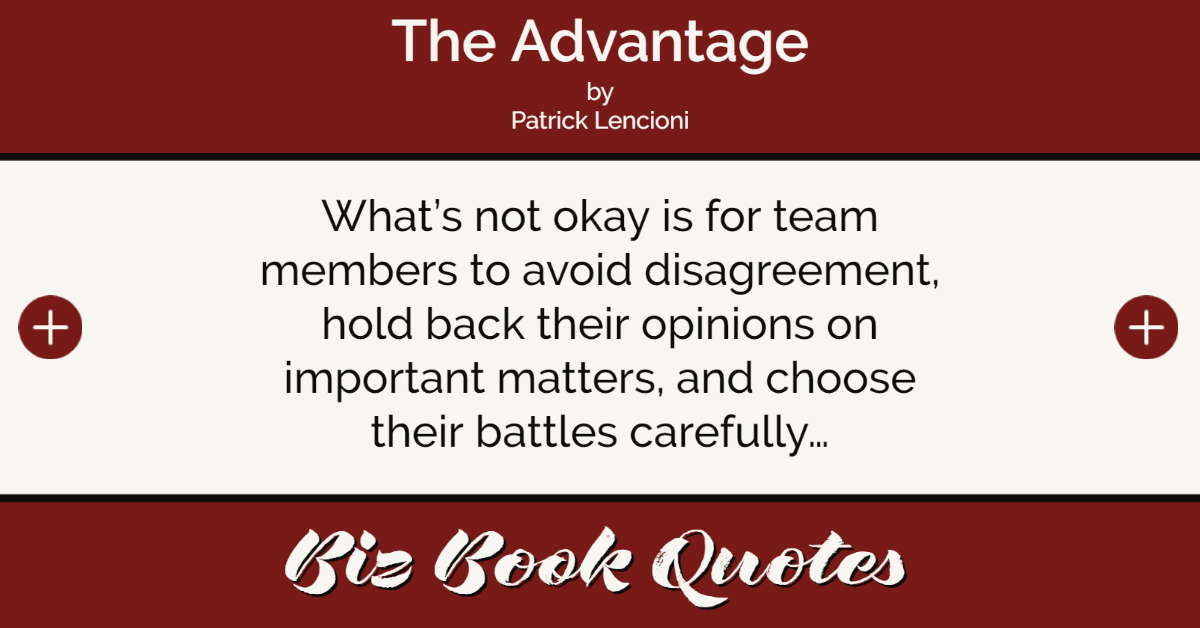
|
The Advantage:
What’s not okay is for team members to avoid disagreement, hold back their opinions on important matters, and choose their battles carefully…
|
41 |
|

|
The Advantage:
Two people who trust and care about one another and are engaged in something important should feel compelled to disagree, and sometimes passionately…
|
44 |
|

|
The Advantage:
…when team members aren’t comfortable being vulnerable, they aren’t going to feel comfortable or safe engaging in conflict.
|
47 |
|

|
The Advantage:
People will not actively commit to a decision if they have not had the opportunity to provide input, ask questions, and understand the rationale behind it.
|
48 |
|
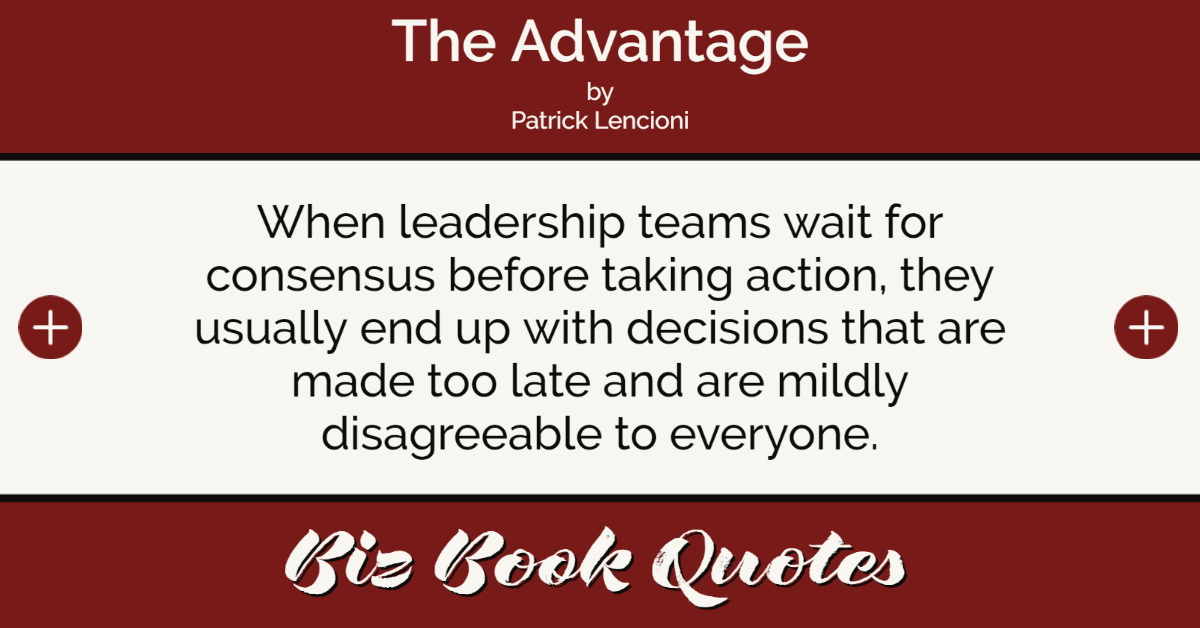
|
The Advantage:
When leadership teams wait for consensus before taking action, they usually end up with decisions that are made too late and are mildly disagreeable to everyone.
|
48 |











